The parking lot opens at 6 a.m., as workers put out their signs, and order the homeless out. For as long as I can remember, the lot was just dirt, littered with trash and construction refuse. Those without homes used the lot, protected by the cement freeway underbelly, for shelter.
Now, the lot has been paved over, providing parking spaces for commuters to the SOMA district. Every morning, the homeless pack up their belongings in shopping carts and move everything on to the sidewalk. There's furniture, bedding rolls and even a shoe-shine booth. At 5 p.m., when the parking attendants go home, the homeless move everything back, awaiting another day to repeat the routine.
They've become a part of the city, blending in to the concrete backdrop, living their lives in the spaces in-between. Every day, I pass an older man who lives near my office as he reads his books and smokes cigarettes. I see him more often than I see my family. I wonder what his name is.
The opinions about how to solve the homeless problem in the city are many, and I don't claim to know what the right solution is. But, I believe it begins with paying attention. We need to stop ignoring those who have been living in plain view for so long, yet somehow remained invisible.
This morning, on the way in to work, I stopped and asked his name. It's Danny.
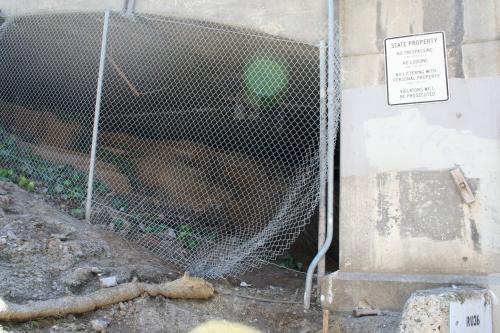
1. Prime real estate. Despite the clearly posted sign, this fence has been pulled up to allow access to the restricted area. These spaces offer shelter and privacy, and are favorites of those who live on the streets.
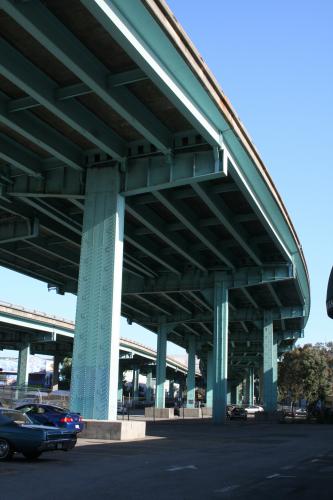
2. Blocks upon blocks of freeway underbelly. The maze of freeway on/off ramps near Division and 9th Street provides shelter to many homeless. The enormous pillars surrounded by sidewalk and fences serve as a backdrop for sleeping, or waiting out the day.
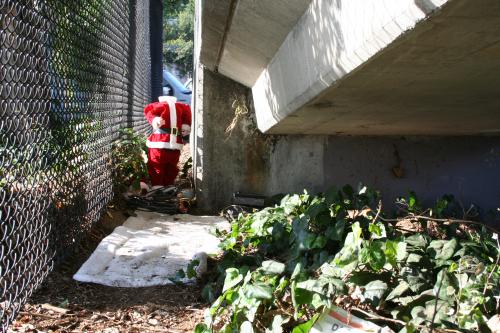
3. The night watchman. Nestled between a fence and entrance to a pedestrian bridge, this sleeping space was guarded by a headless Santa Claus figure. It struck me that the figure might provide some comfort to whomever slept there.
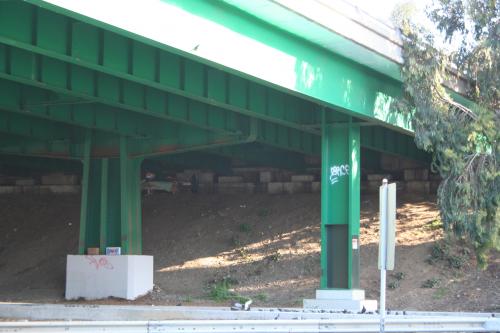
4. Living under a bridge. Growing up, there were always stories with trolls living under bridges. In San Francisco, they're not trolls, but homeless people, and don't charge a fare for passage. The area where Cesar Chavez meets 280 is chock full of small nooks and secluded areas, including this one.
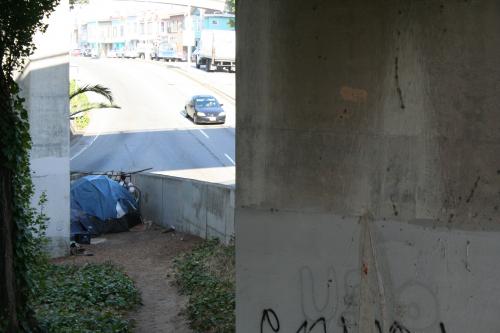
5. What goes bump in the night. I remember camping with my family as a child. It was fun, an adventure. Now, I think I'd feel safer in the woods worrying about bears than camped within the city limits. Who knows what the darkness of the city night has to offer.
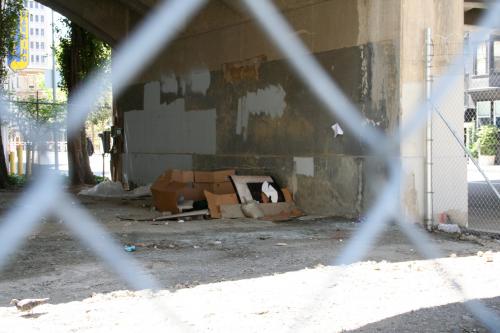
6. Moving one block forward, two blocks back. Much of the space under freeways has been converted to parking lots or fenced off with barbed wire. While this has provided much needed parking, it's also forced many of the residents of these underpasses to find other areas to live in. Still, some find their way through the barriers and continue to make homes there.
